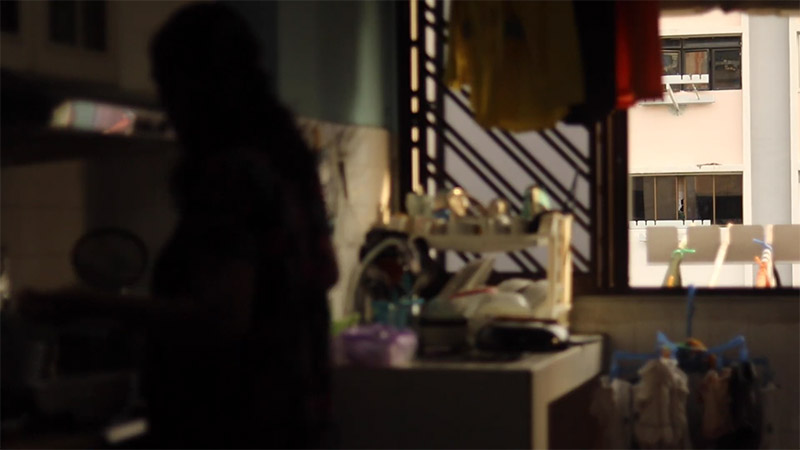
How much do the places we live in, and the people we live with shape us? Three films—Holding Space, Back to One and The Sea Between Us—examine how relationships evolve through our environment and the people around us. In these shorts, the filmmakers approach these themes with stories that feel close to the heart. They feature characters we can see ourselves as, experiencing the same trials in life. Even Ye Thu’s Holding Space, which might come off as a tad abstract, retains its perspective by homing in on the idea of what living in a home entails.
| Reviewed by: Ivan Chin
Each filmmaker’s style is distinct, approaching the narrative in ways which suit the thematic elements. They inject a personal flavour containing their creative visions. In Holding Space, Ye Thu uses the spatial boundaries between apartment blocks to craft a visual reference that highlights how natural it seems to peek into the lives of others. His performative use of mirrors, both in the literal and figurative sense, demonstrates an acute consciousness of cultural differences. His approach is sparse on dialogue, opting instead for the camera to provide a stronger voice. It is a visual expression of personal frustration, and while it detracts from a conventional narrative structure, it is honest with what he’s trying to say. 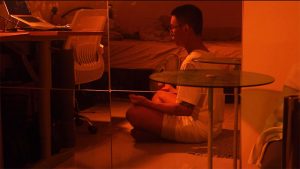 Still From Holding Space (2022), Dir. Ye Thu In stylistic contrast, Yuga J Vardhan’s The Sea Between Us follows a more conventional narrative, with the kinship portrayed between two sisters, and how they live under another family’s roof during the pandemic while their mother is stuck in Malaysia. Separated by the stretch of the causeway, their longing to be reunited is manifested in the form of video calls, bridging them digitally through the screen. There’s a bit more fun in Tang Kang Sheng’s Back to One, which he also stars in. He constructs a meta-narrative, weaving in the making of another film within itself. He adds doses of dry humour, bordering on absurdism at times. It does find a more dramatic ground to rest on, even though the narrative bounces about tonally. As he is fraught by the uncertainty of when he can reunite with his family, we settle into a quiet finish that carries a poignant yearning for home. 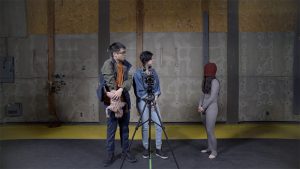 Still From Back To One (2021), Dir. Tang Kang Sheng While the three films differ in narrative styles, they all find common ground thematically. The characters in these films come from different backgrounds, ages, and are caught in their own dilemmas, but their innate desires can be seen as similar. Each explores how the environment shapes the social dynamics between people, either among siblings, neighbours, or even strangers. The characters are bound by their circumstances and are often challenged by the relationships that rise out of them—be it the tension among neighbours, or a prolonged absence from loved ones. These might not be the most groundbreaking of contexts, but despite being universal stories, are imbued with a taste to suit the palette of local audiences. We are in the constant search for stories that we feel connected to, and these are the ones right at our doorstep. 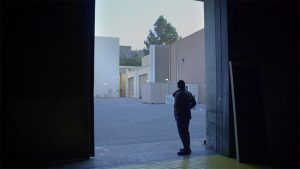 Still From Back To One (2021), Dir. Tang Kang Sheng In the past two years, the pandemic has also challenged our notions of staying connected with others. It would come as no surprise that two filmmakers would use that context to convey their own perspectives. Rather than tiring us with the usual narratives, they have pointed us toward the social dynamics among people instead. I think that’s especially important since these are short films which only have so much time to connect with the audience. 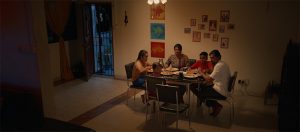 Still From The Sea Between Us (2021), Dir. Yuga J Vardhan We see how the effects of the lockdown have worn people out, and while Holding Space doesn’t imply it, it evokes the same feelings of entrapment at home. A change in environment comes with its own challenges, but as these films have shown, people will find ways to cope by rebelling against the unfamiliar or adapting to it. 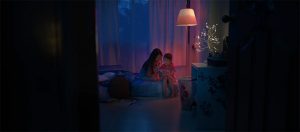 Still From The Sea Between Us (2021), Dir. Yuga J Vardhan What further piques my interest though, is seeing how the filmmaking styles have a tangible effect on how the films themselves feel. Relying on a more experimental concept, Holding Space does possess a level of emotional detachment, and that can make it feel rather cold as the camera never faces the characters head-on. I actually found it the most memorable, either due to its maverick approach, or simply the mise-en-scene created within a confined space. That is not to say the other two films do not leave an impression, and I do have a soft spot for the ‘film-in-film’ style seen in Back to One. On and off camera, the director and actors interact differently, playing different roles in the wider scope. The Sea Between Us is perhaps the most relatable, for it chronicles the emotions many of us had a taste of during what felt like a perennial lockdown. It does end on a more positive note though, letting us pine for hope.  Still From The Sea Between Us (2021), Dir. Yuga J Vardhan These three shorts showcase a range of talent and creativity across different walks of life, from the filmmakers to the cast. It is their individual stories that personify both the filmmaker and their ideas. Ye Thu, being an architectural graduate, marries his personal experience with technical expertise through film. It felt like an effort to lay a foundation upon which an identity could be built. I found his film to have an unbridled honesty, in how it makes a statement based on his life. The same could also be said with Kang Sheng, who like Ye Thu, chose to make himself the main character of the film. His path seems to be a bit awry though, with both peer pressure and a prolonged absence from home shifting him out of his comfort zone. While some might perceive these artistic choices to have doses of narcissism[1] [2] , I think the more important consideration is how they best express themselves.
It is refreshing to see each director bring a unique approach to their own story. Even though The Sea Between Us has a seemingly straightforward narrative, Yuga pads it with genuine moments that funnel the emotions through. These films mirror our lives, and are a reflection of ourselves, revealing unspoken emotions. The changes in our lives are sometimes beyond our control, brought on by external forces that are inescapable. Like Holding Space, our routines and habits fluctuate in new places, and a change in social circles could lead to unexpected bonds, as seen in The Sea Between Us. Perhaps, these experiences are key to cementing our identity, no matter where we go. _ Ivan Chin has a penchant for Hong Kong cinema and science-fiction films, but enjoys anything from blockbusters to the avant-garde. His favourite directors include Johnnie To, Denis Villeneuve and Stanley Kubrick. He also fervently hopes to see local films blossom. In his free time, he can usually be found wandering around cinemas. |
Click Here For More Film Reviews
Do you love writing? Send us a film review and we will feature it on our website. Any film that people can see in the theater or online. Email to: media@scape.sg
This review is also published on Asian Film Archive as part of *SCAPE’s Film Critics Lab: A Writing Mentorship Programme.

